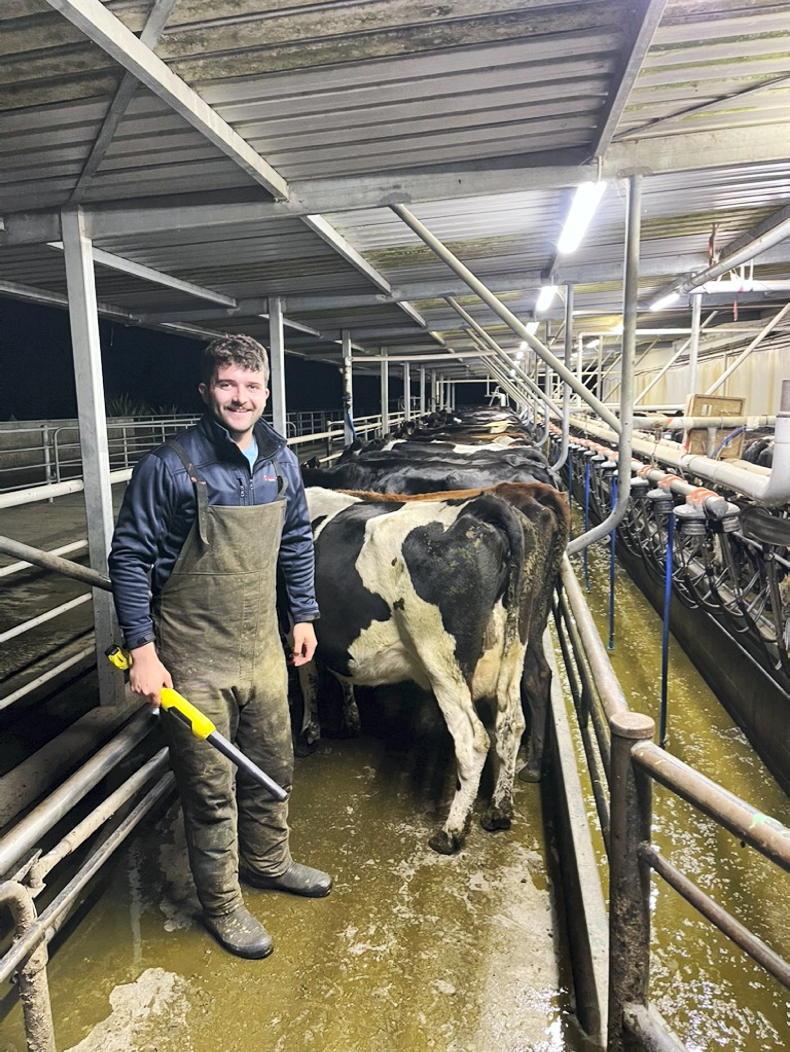The main focus for the farm here in New Zealand (NZ) over the coming weeks is to prepare for next season, with a final scan to check for any embryo losses since the last scan in February.
This enables us to find a handful of cows that we won’t need, ultimately saving on winter feed and silage.
The final check normally reveals 1% to 2% empty rate. It might not sound much, but given the scale of the wider corporation that owns this farm, simultaneously implementing this across the business identifies a significant number of culls.
Following this scan, we plan to dry off 200 cows to reduce demand and these will be lower condition score, early-calving cows.
We run a very low-input system on this farm and one of the measures we use to reduce demand at this time of the year is to dry off, allowing us to increase the farm cover for spring. The milk loss from this is outweighed by what we gain in milk production from spring grass.
Additionally, we have begun milking once a day as milk production from the cows has dropped, and given we are only a week or two from drying off, it won’t have a significant impact on overall output.
The main benefit of this is simply not having to milk the cows twice a day, which I don’t think anyone on the farm is going to complain about.
The main challenge when milking once a day is managing SCC and ensuring all cows get milked out fully – in a 46-a-side swing-over parlour that can be a challenge. But this is a small price to pay for just having to “cup on” once a day.
This slower milking allows for jobs such as a herd audit during milking, which involves scanning all cows’ EID tags to match this to my own records for all the cows on-farm.
Staff can also take holidays as we’ve less demand for labour on the farm and everyone can unwind a little before the madness of calving starts in July.

Zac Elkin doing a herd check.
New season
Planning for staff next season is also under way, with some people staying on and others to be replaced. Recruiting can be a challenge in NZ, as a significant section of the workforce is on some form of work visa (including myself). This creates more hassle and cost for employers, but is seen as the price that has to be paid. My primary goal is to get my residency which I can apply for in July. It will enable me to start a business in my name – this would be the next likely step in my progression in NZ.
A residency will also allow me to come and go as I please, meaning I could travel home for extended periods, while still being able to return to NZ to work.
The main focus for the farm here in New Zealand (NZ) over the coming weeks is to prepare for next season, with a final scan to check for any embryo losses since the last scan in February.
This enables us to find a handful of cows that we won’t need, ultimately saving on winter feed and silage.
The final check normally reveals 1% to 2% empty rate. It might not sound much, but given the scale of the wider corporation that owns this farm, simultaneously implementing this across the business identifies a significant number of culls.
Following this scan, we plan to dry off 200 cows to reduce demand and these will be lower condition score, early-calving cows.
We run a very low-input system on this farm and one of the measures we use to reduce demand at this time of the year is to dry off, allowing us to increase the farm cover for spring. The milk loss from this is outweighed by what we gain in milk production from spring grass.
Additionally, we have begun milking once a day as milk production from the cows has dropped, and given we are only a week or two from drying off, it won’t have a significant impact on overall output.
The main benefit of this is simply not having to milk the cows twice a day, which I don’t think anyone on the farm is going to complain about.
The main challenge when milking once a day is managing SCC and ensuring all cows get milked out fully – in a 46-a-side swing-over parlour that can be a challenge. But this is a small price to pay for just having to “cup on” once a day.
This slower milking allows for jobs such as a herd audit during milking, which involves scanning all cows’ EID tags to match this to my own records for all the cows on-farm.
Staff can also take holidays as we’ve less demand for labour on the farm and everyone can unwind a little before the madness of calving starts in July.

Zac Elkin doing a herd check.
New season
Planning for staff next season is also under way, with some people staying on and others to be replaced. Recruiting can be a challenge in NZ, as a significant section of the workforce is on some form of work visa (including myself). This creates more hassle and cost for employers, but is seen as the price that has to be paid. My primary goal is to get my residency which I can apply for in July. It will enable me to start a business in my name – this would be the next likely step in my progression in NZ.
A residency will also allow me to come and go as I please, meaning I could travel home for extended periods, while still being able to return to NZ to work.







 This is a subscriber-only article
This is a subscriber-only article










SHARING OPTIONS: